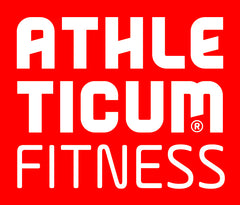THE FLIP SIDE OF HEART ADAPTATION TO EXERCISE FOR ATHLETES AND FITNESS ENTHUSIASTS

Exercise has long been recognized by clinicians, scientists, and public health officials as an important means of maintaining health throughout an individual's lifespan. It improves overall fitness, aids in building strong muscles and bones, reduces the risk of chronic disease, enhances mood, and retards physical decline.
Exercise also plays a significant role in decreasing the likelihood of developing conditions detrimental to heart health, such as high blood pressure, high cholesterol, and obesity. However, excessive exercise over a lifetime may also have adverse effects on the heart, leading to a condition known as athletic heart.
Physical activity and training inevitably activate a response of the heart that may undergo remodelling, altering its size and shape, and consequently affecting its function. These structural and functional changes in the hearts of those engaging in high levels of exercise are termed athletic heart or athlete's heart.
While athletic heart does not necessarily lead to complications, it may heighten the risk of specific cardiac issues in certain individuals. To comprehend how exercise impacts the heart, it's crucial to distinguish between two primary categories: dynamic and static exercises. Dynamic exercises, such as running and soccer, require increased blood pumping by the heart to sustain the activity, whereas static exercises, like weightlifting, demand increased pressure on the heart without significant changes in blood volume.
Athletic heart commonly occurs among endurance athletes who participate in prolonged activities like marathons, often exceeding recommended exercise durations. Endurance activities prompt the heart to adapt by enlarging its chambers to accommodate and pump more blood or by thickening its walls to withstand increased pressure.
Despite the benefits of exercise, individuals with markedly enlarged hearts may be susceptible to developing atrial fibrillation or coronary artery calcification. Atrial fibrillation poses a risk of abnormal heart rhythms, potentially leading to stroke, while coronary artery calcification heightens the risk of heart attack or stroke.
Although elite athletes may face an elevated risk of developing athletic heart, exercise remains paramount in maintaining a healthy lifestyle. Regular exercise, particularly dynamic activities like running, preserves heart flexibility and function, mitigating the stiffening associated with sedentary behavior. Ultimately, adhering to exercise guidelines fosters physical and mental well-being, promoting heart health throughout life, regardless of age.






